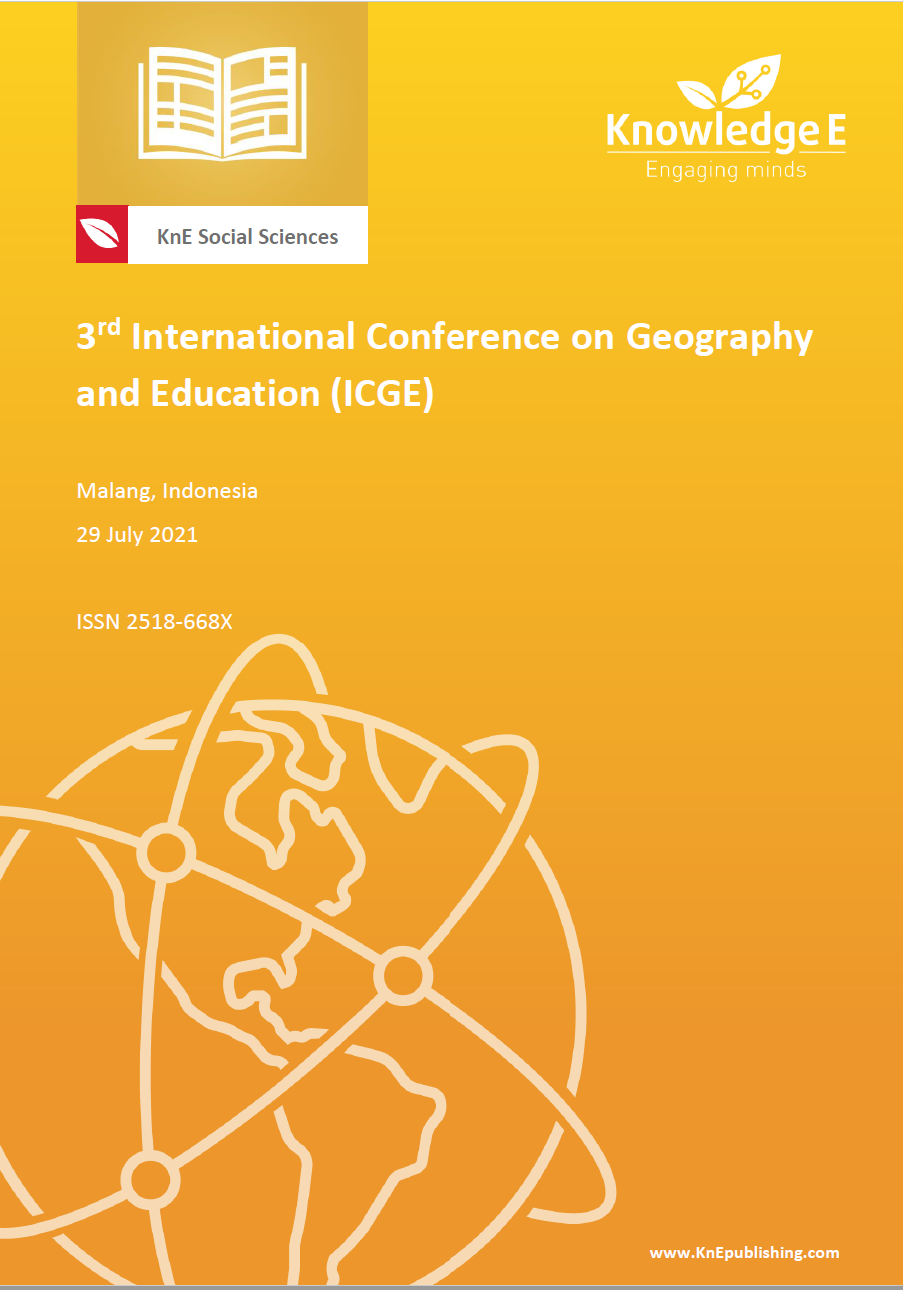Developing a Tourism Strategy for Heritage Villages in the Kayutangan Area
DOI:
https://doi.org/10.18502/kss.v7i16.12166Abstract
The development of tourism in Malang is expanding, supported by the increasing number of tourists. To answer the growing demand of tourists, local governments should innovate with thematic villages. One such village that elevates historical and cultural values is the Kayutangan heritage tourism village, located in the Kayutangan corridor area in Basuki Rahmat Street, Malang City. The city’s image plays a role as an identity-maker and adds to the attraction in the development of the city area. For a long time, the image of Malang, especially the Kayutangan corridor, has been rich in cultural heritage from the Dutch colonial period. The typical Dutch colonial architectural style can be seen in government buildings, shops, and settlements in urban spatial plans developed to this day. However, loss of ownership resulting in the transfer of buildings to new owners, who then renovate the buildings with a more modern design, means that the number of buildings with historical value is decreasing. Furthermore, the empty and renovated buildings can negatively affect the visual appearance of the physical environment and the spatial character of the area, reducing the aesthetic quality. This study aimed to describe the elements that form the image of the city in the Kayutangan area, which can then be used in developing a tourism development strategy in the Kayutangan heritage area. The results of this study indicated a unique development opportunity that focuses on image-forming elements consisting of paths, edges, districts, nodes, and landmarks. Changes in the shape of the buildings are increasing, thereby reducing the aesthetic value of the area. Based on the SWOT analysis results, the elements forming the existing city image need to be optimized as part of a strong aesthetic identity in the Kayutangan heritage tourism village area. The elements forming the existing city image, if developed thoughtfully, can become a brand for the city and lead to an increase in local tourism.
Keywords: urban environment, city image elements, tourism development strategy
References
[2] Highlights, U. T. Tourism Highlights. Madrid; World Tourism Organization (UNWTO): 2016.
[3] Manzo GG. Travel & tourism global economic impact & trends. World Travel Tour Council; 2019.
[4] Sagala, S., Rosyidie, A., Sasongko, M. A., & Syahbid, M. M. (2018, May). Who gets the benefits of geopark establishment? A study of Batur Geopark Area, Bali Province, Indonesia. In IOP Conference Series: Earth and Environmental Science (Vol. 158, No. 1, p. 012034). IOP Publishing.
[5] Mulyadi L, Fathoni B, Prikasari E. Potensi kampung kayutangan heritage. Malang: Deazha; 2019.
[6] Handinoto H, Soehargo PH. Perkembangan kota & arsitektur kolonial belanda di Malang. Yogyakarta: Penerbit ANDI; 1996.
[7] Pettricia HA, Wardhani DK, Antariksa A. Elemen pembentuk citra kawasan bersejarah di pusat kota malang. RUAS (Review of Urbanism and Architectural Studies) 2014;12(1)10-23. Available form: https://doi.org/10.21776/ub.ruas.2014.012.01.2
[8] Fauziah N, Antariksa A, Ernawati J. Kualitas visual fasade bangunan modern pasca kolonial di jalan kayutangan malang. RUAS (Review of Urbanism and Architectural Studies); 2012;10(2):11–18.
[9] Astrini W, Martiningrum I, Adhitama S. Studi golden section pada fasade bangunan di kayutangan. RUAS (Review of Urbanism and Architectural Studies). 2015;13(1):66–74.
[10] Githa IA, Amanulloh MRA, Dharmawan R, Sari EP. Pengembangan Indigenous tourism dengan perspektif dynamic governance (Studi pada kampung heritage kayutangan kota Malang). Spirit Publik: Jurnal Administrasi Publik 2020;15(1)12-25. Available form: https://doi.org/10.20961/sp.v15i1.39645
[11] Khakim MNL, Putri MUU, Suktianto W, Budi NA. Urgensi pengelolaan pariwisata kampung heritage kajoetangan Malang. Jurnal Teori dan Praksis Pembelajaran IPS. 2019;4(1):15–22.
[12] Pramono WT, Anggriani SD, Meiji NHP, Ujang N, Sayono J. Awakening local tourism based on indische architecture in Indonesia; Case study of kajoetangan kampong heritage of Malang. GeoJournal of Tourism & Geosites. 2021;35(2):437–444.
[13] Jayanti TB. Citra kota sebagai strategi pengembangan pariwisata kota juwana. Jurnal Muara Ilmu Sosial, Humaniora, dan Seni. 2018;2(1):420-431.
[14] Purwanto E. Memahami citra kota teori, metode, dan penerapannya. Badan Penerbit Universitas Diponegoro. Semarang: Badan Penerbit Universitas Diponegoro; 2014.
[15] Lynch K. The image of the city: Harvard UP. United Kingdom: Oxford Press University; 1960.
[16] Budihardjo E, Sujarto D. Kota berkelanjutan. Bandung: Alumni; 1999.
[17] Robinson P, Heitmann S, Dieke PUC. Research themes for tourism. Wallingford, Oxfordshire and Cambridge, MA: CABI; 2011.
[18] Rezagama, A., Setyati, W. A., Agustini, T. W. Approaching SWOT analysis to develop strategies of marine-ecotourism in Bedono Village, Sayung, Demak. The 6th International Conference on Tropical and Coastal Region Eco-Development [Internet];2020 Oct 27-28; Semarang, Indonesia. IOP Conference Series: Earth and Environmental Science. 2020[cited 2021 Mar 3] p 12059. Available from: https://iopscience.iop.org/article/10.1088/1755-1315/750/1/012059/pdf
[19] Wirahayu YA, Purwito H, Insani N. Community-based tourism management in Santen Beach, Banyuwangi. International Conference and Innovation Exhibition on Global Education (ICEGE); 2018 Nov 28-29; Jakarta; IOP Conference Series: Earth and Environmental Science. 2019 [cited 2021 Mar 3] p 12059. Available from: https://iopscience.iop.org/article/10.1088/1755-1315/243/1/012059/pdf
[20] Wulandari F, Budiani SR. Strategi pengembangan objek wisata gunung gambar di kabupaten gunungkidul. Jurnal Bumi Indonesia. 2017;6(1)1-10.
[21] Collins-Kreiner N, Wall G. Evaluating tourism potential: A SWOT analysis of the Western Negev, Israel. Tourism. 2007;55(1):51–63.
[22] Sevkli M, Oztekin A, Uysal O, Torlak G, Turkyilmaz A, Delen D. Development of a fuzzy ANP based SWOT analysis for the airline industry in Turkey. Expert System with Application. 2012;39(1):14–24.

